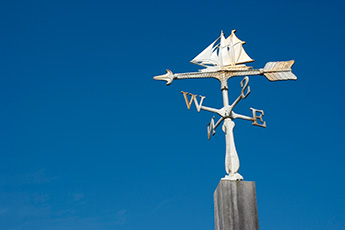Before the widespread availability of traditional financial institutions, many people stored their money at home in kitchen jars or clay pots (hence the term “piggy bank,” although the name came from the old English word for the clay used to make the jars and not the animal). When it came to other valuables such as gold or heirloom jewelry, people would get creative by stashing them under floorboards, behind loose bricks, in hidden cabinet compartments, under pavement stones, and in toilet seat tanks.Although the banking industry has evolved to provide people with more options to store their money, there are still portions of the population who have to resort to either older methods of storing money or unsafe and predatory financial alternatives. Being deliberate about making financial services available to unbanked or underbanked potential customers can both add customers to a community financial institution (CFI) as well as significantly help these members of the larger community. The Federal Reserve reported in 2022 that 21% of the US population earning less than $50K per year were unbanked, where neither the individual nor their spouse or partner had a checking or savings account. Of that 21%, the individuals affected the most were lower-income young adults, Black and Hispanic adults, and adults with disabilities. In 2021, the FDIC reported that around 18.7MM US households were underbanked, where a checking or savings account exists, but there is still a reliance on alternative financial products or services.Because they are excluded from adequate banking relationships, unbanked and underbanked citizens do indeed turn to these alternative financial products to meet their banking needs. They’re forced to rely on money orders, check-cashing businesses, payday and auto title loans, pawn shops, and other overpriced or even predatory alternatives. All of these options come with fees and/or interest. For instance, certain payday loan institutions charge as high as 600% APR. Each unbanked and underbanked consumer spends about $3K each year on fees, for an annual total of $189B. Some consumers spend more than 10% of their pre-tax income on alternative financial products.Overlooked and Underserved CommunitiesAccording to a 2019 FDIC survey on household banking and financial services use, BIPOC (Black, Indigenous, & People of Color) households are the most underserved and underbanked. Just 2.5% of all white households are unbanked or underbanked, but 13.8% of Black households and 12.2% of Hispanic households find themselves in that situation. American Indian and Alaska Native communities are the ethnic group most likely to lack reliable banking relationships, with 16.3% of households unbanked or underbanked. American Indian and Alaska Native individuals who live on reservation land have additional challenges in particular, including limited internet access and long distances between residences and CFI branches or ATMs. The internet access gap between tribal and nontribal lands is about 3x greater than the gap between white and Black areas, and 4x the divide between urban and rural internet access. On tribal land, 18% of people have no internet, and internet access overall is 21 percentage points lower than neighboring nontribal land. On average, Native lands and the nearest financial institution are 12.2 miles apart. That’s about 20x greater than the distance between rural city centers and the nearest financial institution.As previously noted, lower-income individuals comprise the majority of unbanked or underbanked people. Of the 21% of unbanked individuals making under $50k a year, 17% of them make less than $25K per year. That percentage is even higher for people with disabilities: 22% of all US adults with disabilities are underbanked, and 10% are completely unbanked. Younger customers are also disproportionately affected. A Morning Consult report found that Gen Z and Millennial customers comprise 60% of unbanked individuals, and 61% of underbanked individuals, with Gen Z taking up a slightly higher proportion. Common Reasons for Being Unbanked or UnderbankedThe reasons that people in these various demographics are unbanked or underbanked vary, and many of them are common to all groups of unbanked and underbanked consumers. They include:
- Little or no understanding of the US banking system. If you don’t understand what a financial institution can do for you, you’re less likely to seek out a banking relationship.
- Distrust. Some financial institutions have been in the news for various financial shenanigans, including creating fake accounts and writing loans that borrowers can’t repay. About one-third of the unbanked customers in the FDIC’s report say they do not trust financial institutions.
- Previous banking struggles. A history of unpaid overdraft fees, bounced checks, or similar missteps that blacklist a potential or previous customer from opening a new account.
- Poverty. According to the US census, 17.1% of Black Americans, 16.9% of Hispanic Americans, and 25% of American Indian and Alaska Native Americans live in poverty. That number is 8.6% for white Americans.
- Unemployment. People of color have unemployment rates that are about 4% higher than those of white Americans. Sometimes, that number goes higher. In January 2022, for instance, the Native unemployment rate was 11.1%, nearly triple the 4% overall unemployment rate.
- Living paycheck to paycheck. Although some households may be living above the poverty income level, a wariness of non-sufficient fund fees and other charges keep some individuals who are relying on every dollar of their paychecks from pursuing banking relationships.
- Poor credit history. People who grow up in financial deserts are 20% less likely to have credit. If they do have a credit score, it is typically 7 to 10 points lower than that of people who grew up in families with adequate banking relationships. The overall effect of having no or lower credit is like reducing their annual income by $6K.
How CFIs Can HelpSome financial institutions specialize in reaching out to unbanked and underbanked populations. Overall, however, unbanked and underbanked consumers are a largely untapped source of new consumer and business clients for CFIs. To access those groups of potential customers, CFIs will need to consider the following strategies:
- Tailor your outreach and offerings to the people you hope to serve. Understand what has kept them from building substantial banking relationships and learn about their needs.
- Get mobile. Unbanked communities may lack stable housing or live far from physical financial institutions. They may also lack reliable internet access. A good mobile app would be the best way to reach them. Alternatively, you could explore the possibility of branches-on-wheels.
- Keep products affordable. Minimum deposits, monthly fees, and other costs can stand in the way of customers who would otherwise sign up for checking or savings accounts.
- Don’t rely exclusively on credit scores when making lending decisions. Spending habits and bill payment history can offer insight into the creditworthiness of people who don’t have a credit history or have a poor credit history.
By working to understand and meet the needs of unbanked and underbanked communities, CFIs can create solutions that help grow their customer bases and strengthen their communities.




